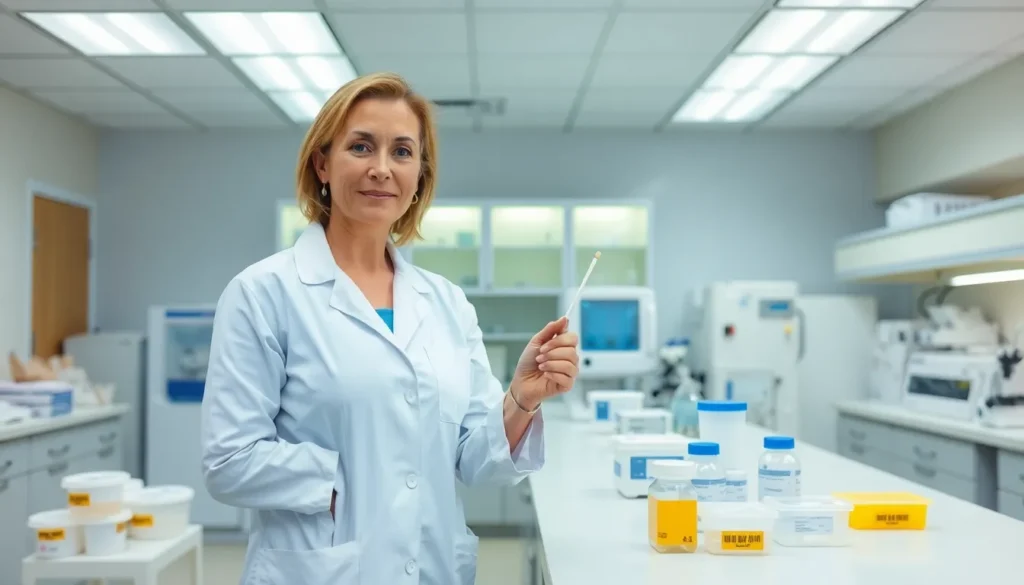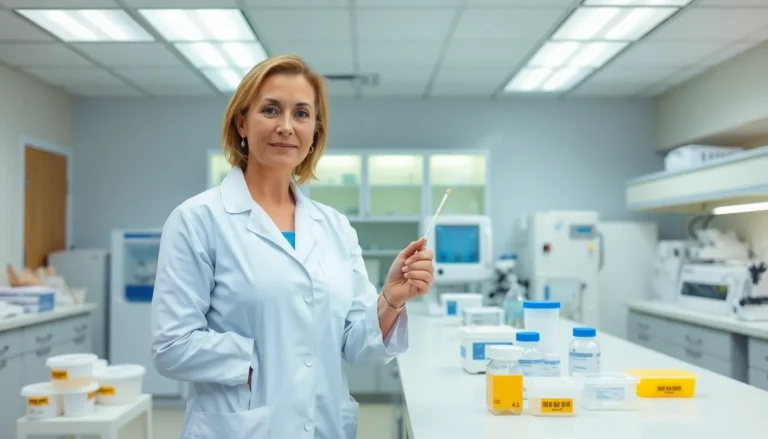When it comes to diagnosing viral infections, there’s nothing more crucial than the viral culture swab. If you’ve ever had to swab your throat or nose and felt like you were auditioning for a medical drama, you’re not alone. This simple yet essential tool plays a vital role in identifying pathogens in our bodies and crafting appropriate treatments. Let’s jump into the ins and outs of viral culture swabs and unravel why they matter so much. Spoiler alert: it involves more than just some cotton and a test tube.
Table of Contents
ToggleWhat Is a Viral Culture Swab?

A viral culture swab is a laboratory test used to collect samples from a patient suspected of having a viral infection. It commonly involves using a swab, think of a long Q-tip, to gather secretions or cells from areas like the throat, nose, or even the conjunctiva of the eye. This swab is then placed in a special medium that encourages viruses to grow, allowing lab technicians to identify and characterize the pathogen. In essence, it’s like putting the virus on a buffet table and waiting for it to invite its friends over so we can better understand what we’re dealing with.
This procedure is particularly significant because some viruses aren’t detectable via standard blood tests. By utilizing a viral culture swab, doctors can gain insight into the specific strain of a virus infecting a patient, which is critical for determining the most effective treatment.
The Process of Collecting a Viral Culture Swab
Collecting a viral culture swab is a straightforward process, but it may feel a bit uncomfortable. First, the healthcare provider explains the procedure to the patient, which helps reduce anxiety, after all, no one relishes the thought of a long stick jabbing about their nasal passage.
Next, the provider dons gloves, ensuring hygienic handling of the swab. The swab itself is inserted carefully into the targeted area, with a gentle rotation to ensure adequate sample collection. For nasal swabs, this may involve inserting the swab past the nasal cavity, while throat swabs focus on the back of the throat.
Once collected, the sample is immediately placed into a sterile container and transported to the lab. Here, the magic happens as the sample is incubated in favorable conditions for viral growth. After a few days, technicians observe the culture for signs of viral activity, ready for further testing.
Types of Viral Culture Swabs
There are several types of viral culture swabs, chosen based on the suspected source of infection. Here’s a quick overview of the most common:
- Throat Swabs: Usually used for respiratory infections. This swab targets the throat area to detect pathogens causing illnesses like strep throat.
- Nasal Swabs: Ideal for identifying viruses like influenza or SARS-CoV-2. This swab collects samples from the nasal cavity, where many respiratory viruses reside.
- Conjunctival Swabs: Target the eyes to check for signs of viral conjunctivitis. This is where a swab collects secretions from the eye area.
- Tissue Swabs: Used for specimens collected from specific body tissues that may harbor a virus, often seen in cases of severe infections or when localized symptoms arise.
Each type serves a unique purpose, emphasizing the importance of tailoring the swab method to the suspected virus.
Applications of Viral Culture Swabs in Medicine
Viral culture swabs find their most impactful use across various medical applications. Notably, they assist in diagnosing viral infections, differentiating between bacterial and viral illnesses, and underpinning specialized research.
- Diagnosis of Infections: They allow healthcare providers to confirm specific viral infections, guiding effective treatment plans.
- Monitoring Outbreaks: During viral outbreaks, such as COVID-19, mass swabbing helps track transmission rates and virus evolution.
- Research and Vaccine Development: Understanding viral behavior and characteristics through cultured samples facilitates the development of vaccines and therapeutics.
- Antiviral Sensitivity Testing: These swabs also pave the way for assessing a virus’s sensitivity to antiviral medications, ensuring optimal treatment strategies.
Interpreting Results from Viral Culture Testing
Interpreting results from viral culture swabs involves understanding growth patterns and identifying the viral strain. Once the culture is established, lab technicians observe for any signs of viral replication.
If the culture shows growth, further tests are conducted to determine the specific virus, providing valuable information about its nature and potential responses to treatment. These results can reveal whether the virus is susceptible to antiviral drugs, helping doctors tailor individualized treatment plans.
Common Challenges and Limitations
Even though their wide applications, viral culture swabs face several challenges and limitations. First, the process is time-consuming and may take several days before results are available. In acute cases where immediate interventions are essential, delays can hinder prompt treatment.
Also, some viruses might not grow well in culture, leading to false negatives. This is particularly true for fastidious viruses, which require specific conditions to thrive. Hence, clinicians often supplement viral culture results with molecular testing methods, like PCR, to enhance diagnostic accuracy.
Hygienic issues can also arise, as improper collection or handling may lead to contamination, skewing results.
Future Trends in Viral Culture Techniques
The future of viral culture techniques looks promising with advancements in technology. Innovations like digital pathology and AI-driven analysis are at the forefront, aiming to enhance accuracy and speed in detecting viral infections.
Also, researchers are exploring the potential of automated systems designed to streamline the entire process. These could reduce human error, speed up sample processing, and ensure greater consistency in results. Developments in synthetic biology may also allow for the creation of specialized viral culture media tailored to specific pathogens, improving the likelihood of successful virus cultivation.



